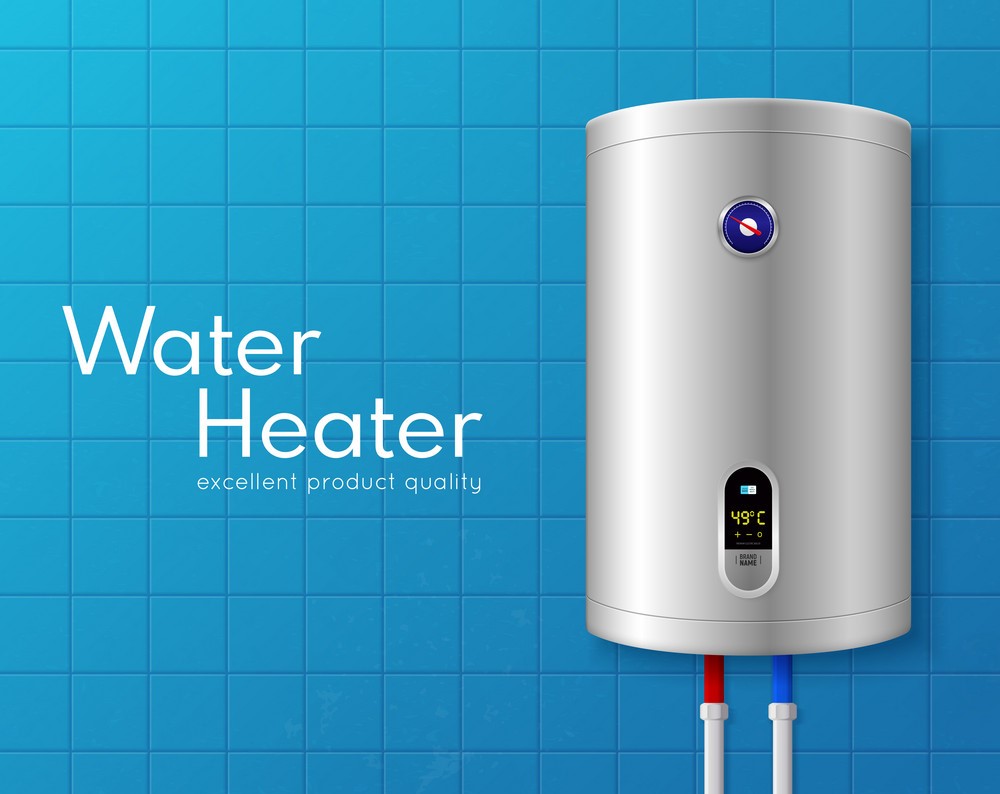

WATER HEATERS− SAFETY STANDARDS
We cannot imagine the world today without electrical appliances. A large variety of electrical appliances are available for the consumer to accomplish various tasks. One such widely used appliance in India is the water heater.
In India, water heaters drive a workforce-oriented industry. To encourage small-scale industries Government of India has reserved the manufacturing section for this sector. Small-scale industries have limitations specific to measures such as technological inputs, testing techniques, overall quality concepts, sophisticated and latest manufacturing machinery, design concepts, etc. These have implications for the ultimate product safety. The potential for electric shock or fire hazard by the unsafe use of an appliance is real. These hazards can be prevented if the consumers take the appropriate precautions while using an appliance. However, as water heaters are used by the common consumer who may not be aware of the risk, it is imperative that the appliances must have inbuilt features that are practicable and safe.
The most common way to achieve this is through standardization. Standards guide the industry on the specification of aspects which make the appliance reasonably safe. The best way to demonstrate the safety of an appliance is to ensure that it complies with the relevant safety standards. It also gives an assurance to the consumer that the water heaters are safe to use.
Indian Standards on Safety of Household Electrical Appliances
BIS came up with the IS 302 in 1951 to prescribe general and safety requirements and constructional details of appliances in respect to ensure their safe and reliable operation. The standard was subsequently revised in 1960, 1963, 1967, 1973 ,1979 and 2008. This standard considers the accepted level of protection against hazards used in accordance with the manufacturer’s instructions. It also considers abnormal situations that may occur during use. IS 302-1:2008 is based on IEC 60335-1(2006). However, IS 302-1 neither refers to a specific appliance nor does not cover in detail all the requirements an individual appliance should comply with. Consequently, compliance with this standard is not in itself a complete guarantee of safety. Therefore, another series of standards, i.e., the IS 302-2 was brought out to deal with requirements for individual appliances. All individual standards of Part 2 refer to IS 302-1.
Some of the important standards for requirements related to water heaters are as follows:
| S.No | IS No | Title |
|---|---|---|
| 1 | IS 2082: 2018 | Stationary storage type electric water heaters |
| 2 | IS 302-2-21: 2011 | Safety of household and similar electrical appliances – Part 2: Particular requirements, Section 21: Stationary storage type electric water heaters |
| 3 | IS 8978: 1992 | Electric instantaneous water heaters |
| 4 | IS 302-2-35: 2017 | Safety of household and similar electrical appliances – Part 2: Particular requirements, Section 35: Electric instantaneous water heaters |
| 5 | IS 368: 2014 | Electric immersion water heaters – Specification |
| 6 | IS 302-2-201: 2008 | Safety of household and similar electrical appliances – Part 2: Particular requirements, Section 201: Electric immersion water heaters |
Important General Safety Requirements
The major hazards associated with the use of electrical appliances are electrical, mechanical and fire hazards in nature. These have been addressed in IS 302-1.
I Protection against electric shock:
An electric shock occurs when some electric current passes through the body. It happens when a person comes in contact with an energized part. IS 302-1 addresses this issue by including requirements that ensure protection from direct and indirect contact. The main strategies and corresponding tests are as follows:
a) Protection by enclosure:
Appliances are carefully constructed and enclosed to provide adequate protection against accidental contact with live parts. Compliance is checked with the use of suitable test probes.
The appliance should have the adequate mechanical strength to withstand rough handling that may be expected during normal use. The enclosure of the appliance should not be deformed during abnormal operation test because that will impede compliance to protection.
b) Protection by earthing:
Appliances of Class I should be provided with a permanent and reliable connection to an earthing terminal to prevent electric shock received by touching conductive parts of the appliance. It may become live due to failure of insulation or any other reason.
c) Protection by insulation of live parts:
The insulation and electric strength of appliances should be adequate. The leakage current between any pole of supply and accessible metal parts should not be excessive. An accessible part is not considered to be live if it is separated from live parts by protective impedance. Insulation should work satisfactorily even after being subjected to humid conditions.
d) Protection from residual voltage:
When equipment is disconnected from the main supply, exposed conductors shall have residual voltages (from any stored energy) that are safe. If the appliance incorporates capacitors, leakage current is measured with the switch on and off positions to verify that the capacitors connected behind a single pole switch do not cause leakage of current excessively.
II Protection from excessive temperature and fire hazard:
Excessive temperature can lead to potentially hazardous situations like the failure of insulation, toxic fumes and fire. IS 302-1 addressess this issue by including the following requirements to ensure that the temperature rise of parts is limited under normal. Specified abnormal conditions of use are:
a) Limiting the temperature rise under normal conditions:
Temperature rise test (limits have been specified) ensures that the product and its surroundings do not attain excessive temperature during normal use.
b) Protection from overload:
Appliances incorporating circuits supplied from a transformer are constructed in such manner that in the event of short circuits likely to occur during normal use, excessive rise in temperatures do not transpire in the transformers or in the associated circuits.
c) Safety under abnormal conditions
Abnormal operation test (specifies the permissible temperature rise of parts and a high voltage test) is carried out to ensure that overheating of components of an appliance does not occur during abnormal or careless operation or cause the risk of fire in hazardous situations.
d) Resistance to heat and fire
External parts of non-metallic material, insulating material supporting live parts, connections and thermo-plastic material providing supplementary insulation or reinforced insulation shall be sufficiently resistant to heat to prevent any hazardous situations.
e) Protection by disconnection of supply
An intentionally weak part is sure to rupture under conditions of abnormal operation. To prevent risk disconnecting the power supply is required.
III Protection against mechanical hazards
Moving parts of the appliance, as far as they are compatible with the use and working of the appliance, shall be positioned or enclosed to provide adequate protection against personnel injury in normal use. The appliance should also have adequate stability.
IS 302-2-21: 2011 – Safety of Household and Similar Electrical Appliances: Part 2 Particular Requirements, Section 21: Stationary Storage Type Electric Water Heater
This standard deals with the safety of electric storage water heaters for households and similar purposes. It is intended for heating water below boiling temperature. The rated voltage is not more than 250 V for single-phase appliances and 415 V for other appliances.
This standard is based on IS 60335-2-21: 2004, Edition 5.1 except for the following modifications:
a) The leakage current value is more stringent compared to IEC Publication.
b) Ambient test conditions are based on national conditions.
IS 302-2-35: 2011– Safety of Household and Similar Electrical Appliances – Part 2: Particular Requirements – Section 35: Electric Instantaneous Water Heaters
This standard is based on IEC 60335-2-35: 2006 and deals with the safety of electric instantaneous water heaters for households and similar purposes. It is intended for heating water below boiling temperature. The rated voltage is not more than 250 V for single-phase appliances and 415 V for other appliances.
a) Leakage current value is more stringent compared to IEC Publication.
b) Ambient test conditions are based on national conditions.
c) Bare-element water heater is not included in this standard for safety reasons.
It has been an endeavour at BIS to upgrade not only the quality but also the safety of appliances through National Standards for the benefit of both industry and consumer. BIS is also constantly in the process of review and upgradation of National Standards to calibrate with the world market where quality and safety are prime considerations. This process of calibration is proceeding at a fast pace due to the growing worldwide use of international safety standards and increased interest in certification for bilateral and multi-lateral trade. The need to align our standards with international standards is also necessary to facilitate international trade in accordance with WTO-TBT Agreement. However, due consideration is given to contemplate the climatic conditions, raw material availability, testing facilities, technological status, etc., with safety as the prime consideration.

Priti Bhatnagar
Scientist-F &Head (Electrotechnical)
Bureau of Indian Standards (BIS)

Ritwik Anand
Scientist-D (Electrotechnical)
Bureau of Indian Standards (BIS)
Go Back